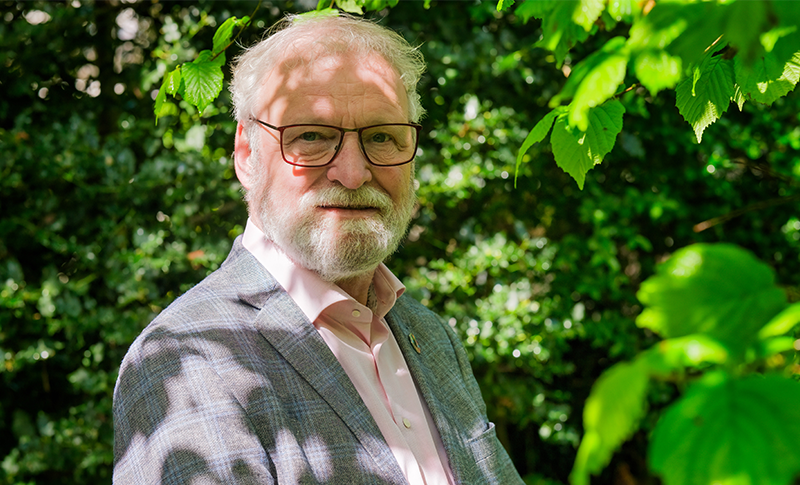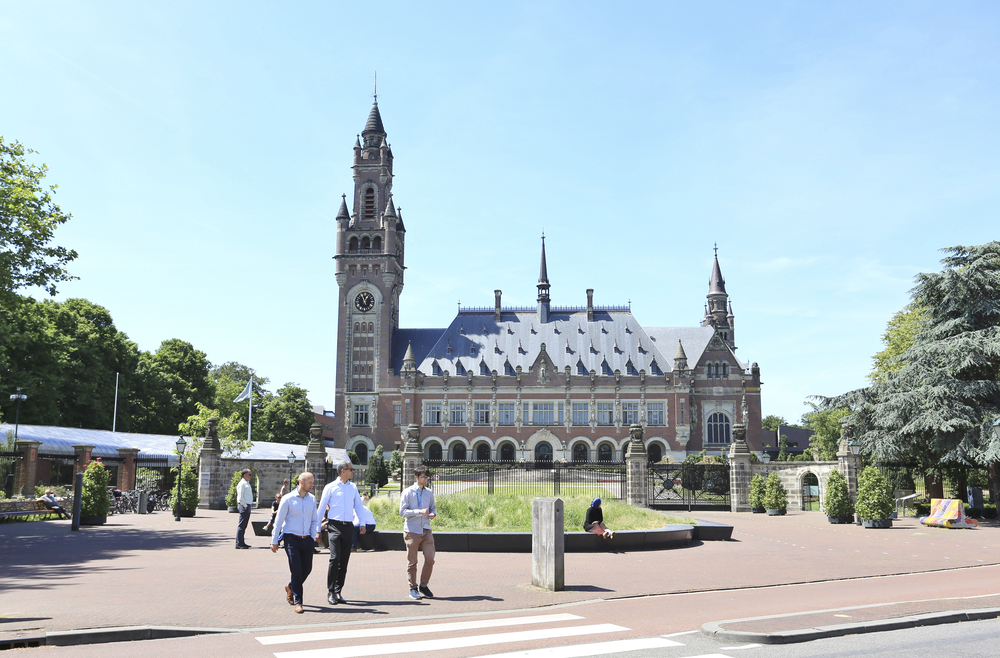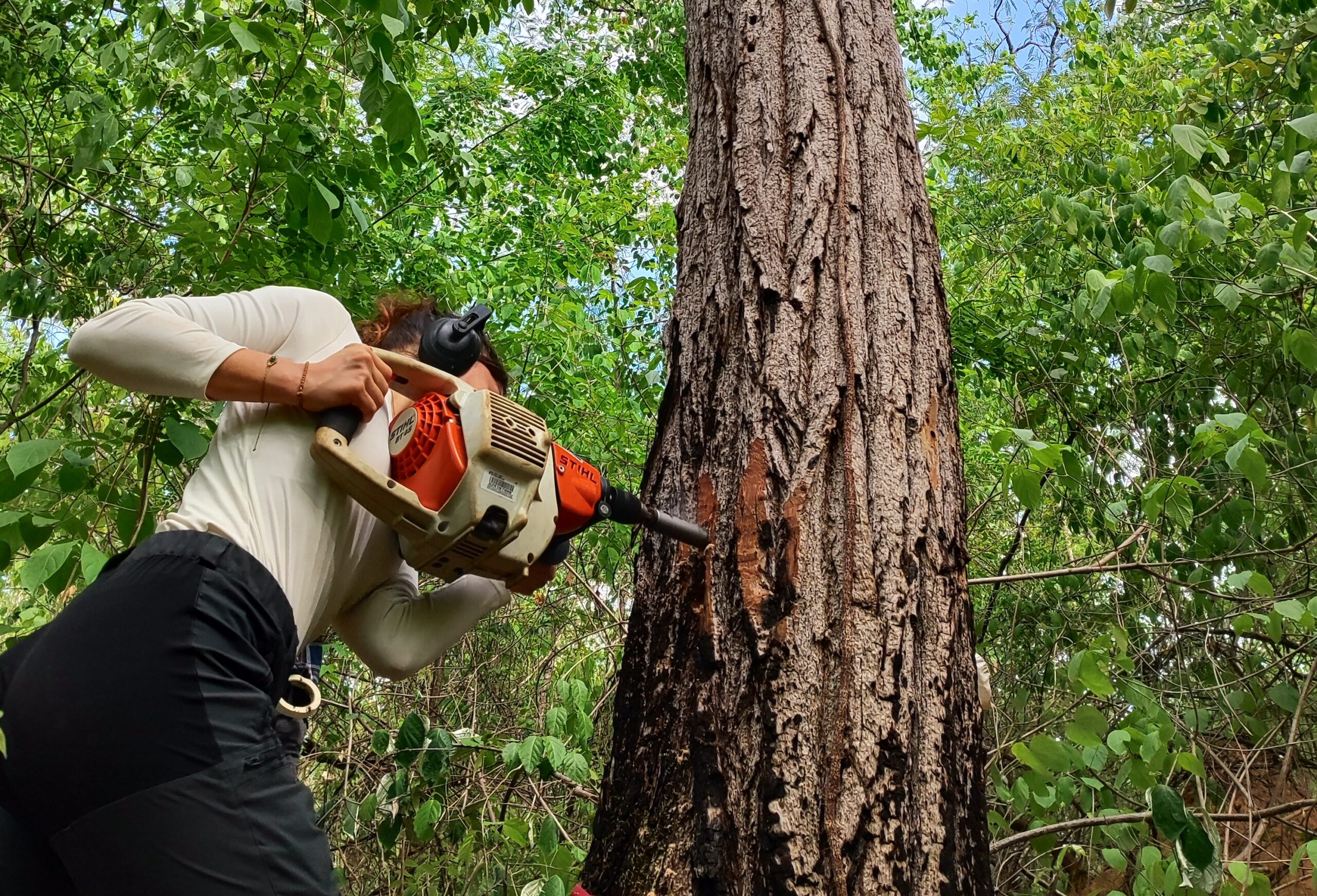Global warming has shaped his career. And climate change won’t be stopping any time soon. But Rik Leemans is: the leading light of climate studies is retiring. Concerned, but hopeful.
Rik Leemans has been a Wageningen full professor for nearly a quarter of a century. For much of that time, he was chair of the Environmental Systems Analysis group. He became an international leading light in climate studies, and won a Nobel Prize, albeit a shared one: as a co-author of several IPCC reports, Leemans was among the Nobel Peace Prize winners in 2007. It was shared among hundreds of people, including our new rector magnificus Carolien Kroeze and special professor Pavel Kabat.
The certificate graced his office wall for many years. Was he proud of it? ‘It was nice that we got it. It can open doors.’ And he proceeds to tell a funny story about the VIP treatment he received on a visit to the University of Tashkent (Uzbekistan), where he was visiting professor for a while. There was a black chauffeur-driven Mercedes, a police escort, and exaggerated respect from the rector. ‘He asked me to sit on his chair because no Nobel Prize winner had ever sat on it before.’
That Rik Leemans will go down in history as a climate scientist is largely down to coincidence. He could just as easily have been an economist. ‘I was torn between Economics and Ecology. My girlfriend at the time was going to Nijmegen and they didn’t offer Economics there. But they did have a very good degree course in Ecology.’ But he was only really gripped by the subject when he studied algae for his first elective course: ‘We were studying diatoms (unicellular brown algae, ed.) on the underside of the leaves of a water gentian. In three days a layer of diatoms forms on a pristine leaf, and within three weeks there’s a culture that is structurally as complex as a mature tropical rainforest. Along comes a mosquito larva then, and takes a bite out of it: a kind of deforestation among algae. That provides a very good illustration of succession and dynamics, two core concepts in Ecology. I found it fascinating.’
Reindeer pizza
Leemans got his PhD at the University of Uppsala (Sweden) with Professor Eddy van der Maarel, with whom he had done research at Nijmegen on European beech forests. ‘At my graduation I was sitting by the pond on the Nijmegen campus with him. He had just got a new job in Sweden, and asked me if I wanted to join him there as a PhD student. In Uppsala, I delved into forest dynamics and started modelling how light that comes through the canopy influences the regeneration and the structure of the forest.’
His next job was by invitation too. ‘In my last year in Sweden, my supervisor asked me if I’d like to accompany an American paleo-ecologist in Lapland. He was Allen Solomon and he wanted to correlate the growth of pine trees with the weather, using their growth rings. We were travelling around for two months to take samples from old pine trees. Surviving on reindeer pizza for two months. And those samples never got analysed. Solomon was nominated for a job at IIASA, the International Institute for Applied Systems Analysis, in Austria. He asked me to go with him. He said, you’re a good forest ecologist and modeller; I need you.’
Climate scientists are much too cautious and conservation in their predictions
At IIASA, Leemans’ career picked up momentum. He worked with a small team studying the dynamics of the boreal (sub-arctic) forests of Siberia, Scandinavia, Canada and Alaska. The result was the 1992 publication System Analyses of the Boreal Forests. ‘I did the modelling work for that book. A unique experience for a junior scientist to be allowed to edit a book like that.’ Unique in part because it produced the first interpolated (estimating values for places for which no data is available) digital climate database.
‘We needed climate data for that work. So I rang the World Meteorological Organization to ask for their data. I could get it, but it was 1989 and hardly anything was digital. Wolfgang Cramer and I then established CLIMATE: the Cramer Leemans Interpolated Meteorology for Application in Terrestrial Ecology. That database has been used an awful lot. We started with the data from 14,000 weather stations in the boreal regions, and in the subsequent years that grew to 40,000 stations all around the world.’
Pioneering
By now it was the early 1990s. Climate change was not yet being seen as a catastrophe that humanity was heading towards. In fact, Leemans found it quite inspiring. ‘The first time I heard of climate change was in Sweden at a lecture by Bert Bolin, who later became the first chair of the IPCC. This was something new, and as a young scientist I thought it was exciting.
You can’t discuss things with climate sceptics
In scientific terms, it was highly innovative, and I was involved in the development of the first global vegetation models. The work at the IIASA generated articles that were published in the top academic journals. Solving new problems requires innovation, and that’s what makes me happy. I’ve been a pioneer throughout my career.’
Leemans sees CLIMATE as one of the highlights of his career. Another one was the IMAGE model: the Integrated Model to Assess the Global Environment. This model reveals the effects of human activity on the climate. Leemans started working on it during his period at the Dutch National Institute for Public Health and the Environment (RIVM), where he got a job in 1990 after IIASA. IMAGE was still limited at that point, but he developed it further and expanded it into the first global land use model. It provided the basis not only for the IPCC’s various scenarios, but also for analyses of climate effects.
Humans as the culprits
By that point a renowned scientist, Leemans became a full professor in Wageningen in 1999, and four years later the chairholder. The initial excitement about climate change had long given way to serious concern, and even shock. Climate change has become the biggest threat to humanity, and human beings are the culprits. That conclusion, which was initially met with scepticism, has been irrefutable since the latest IPCC report in 2021. Leemans has no time for climate sceptics anyway. ‘I haven’t engaged in discussion with them since 2010. I am all for scientific debates based on factual arguments. That is not possible with climate sceptics. Their goals are political and not scientific. They aim to sow as much doubt as possible so that nothing is done about the climate. I was once asked to discuss it with Thierry Baudet on the TV talk show Op1. I don’t do things like that. It’s not a scientific debate. and he’s a professional debater, so you’ll only lose.’
I’ve been a pioneer throughout my career
The prospect of halting climate change seems more distant than ever. Is that a sorry state of affairs after a lifetime of climate research? Yes and no, says Leemans. ‘It depresses me when I see that time is going by and governments are doing so little. It is still theoretically possible to limit global heating to two degrees, but then we’ve got to pull out all the stops for the next 20 years. Governments, industry and financial institutions have really got to get on with reducing CO2 emissions. But there is hope. We’re seeing some pension funds withdrawing from fossil fuel investments. A lot of Dutch municipalities are aiming to be climate-neutral by 2030. Electric cars are becoming commonplace. A lot of people are installing solar panels and they are getting cheaper and cheaper.’
Too conservative
What if we don’t manage that two degrees? ‘Then it will start getting tough,’ says Leemans. ‘We really can’t adapt beyond those two degrees. You can see than right now in many parts of the world. Heatwaves that go on for three weeks with temperatures of 40 to 45 degrees. Floods like the ones in Germany, Belgium and Limburg a couple of years ago. In Science magazine in 2005, several of us described the likely effects of climate change on Europe. The projections were for the end of this century. They were correct, but they were 70 years out. We’re already seeing the effects, especially in the form of extreme weather. Climate scientists are much too cautious and conservative in their predictions.’

 Photo Guy Ackermans
Photo Guy Ackermans 

